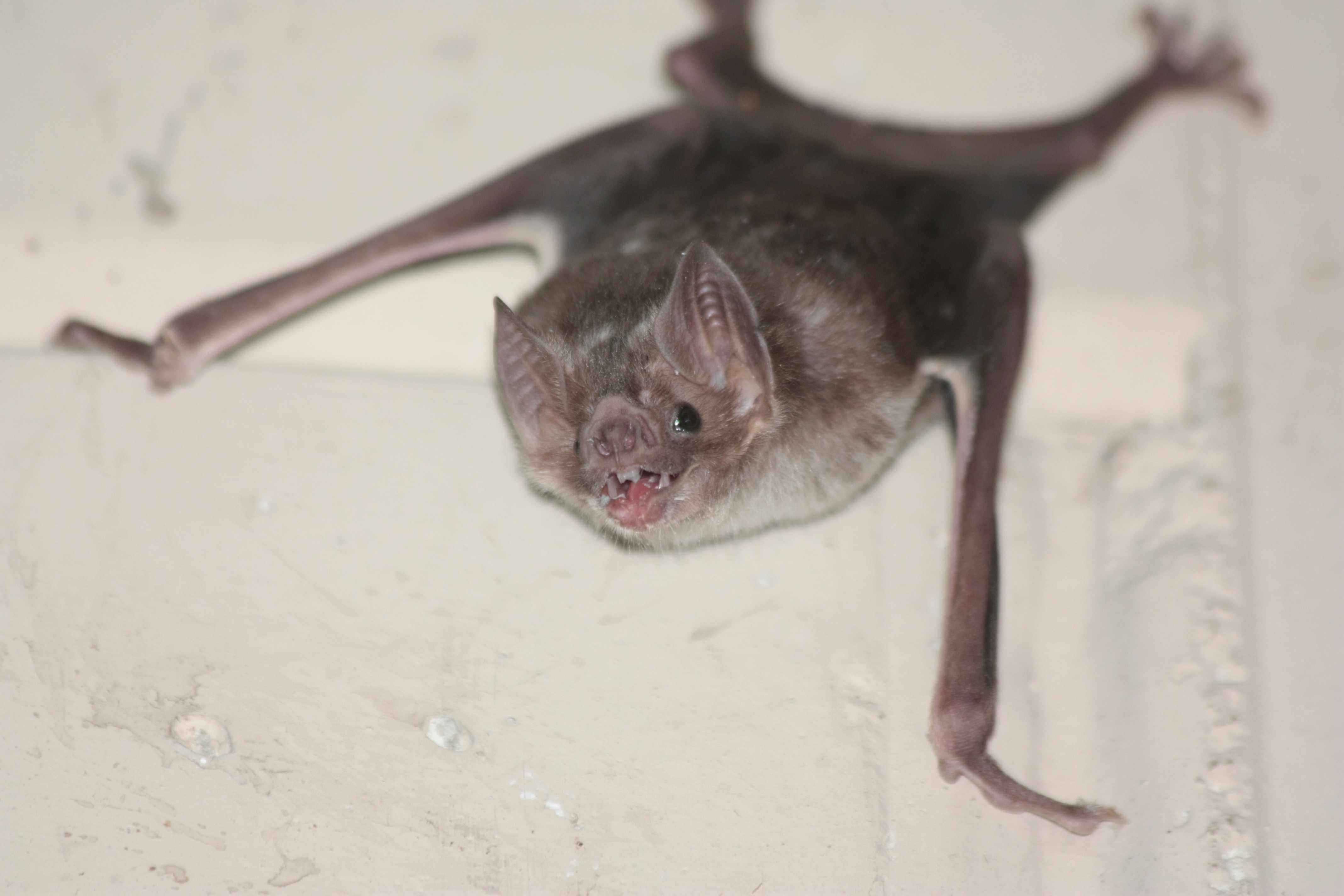
The vampire way of social security
Biologists at the Smithsonian Tropical Research Institute and the University of Konstanz have observed social security strategies among vampire bats
Vampire bats create networks of relatives and non-relatives that serve as backup support when family members go missing and are therefore no longer available as food donors. This strategy was discovered by biologists from the Smithsonian Tropical Research Institute (STRI), Panama, and from the University of Konstanz, Germany, who describe it as “social bet-hedging”. Vampire bats are well known for feeding other group members and thereby increasing the chances of being fed themselves when they have missed out on food for that day. According to the social bet hedging theory, an additional element to this survival strategy seems to involve amassing a large number of potential donors, even when doing so means that they have to feed other bats more often.
To understand how social bet hedging works for vampire bats, Gerry Carter’s team from the STRI monitored social interactions in a captive colony of about 30 marked common vampire bats (Desmodus rotundus) for four years. They worked out how the bats were related based on their genes. Female vampire bats form strong social bonds with their mothers and daughters as they groom and share blood meals. Carter removed individual females from the group for a 24-hour fasting period. Just before returning them to the group, he removed one of the bat’s key food donors, usually its mother or daughter. Then he looked at how each bat coped with this change to its social network.
When they removed a major food donor, like a mother or daughter, from a bat’s social network, females who previously built up more friendships with non-relatives coped better with their loss. They received more food than did female bats who only invested in close kin (i.e. only with their mother or one of their daughters). “Vampire bats who feed more non-relatives don’t usually do better at getting fed when they are hungry,” said Carter. “So why do this? We discovered that on the rare occasion that they lose a major food donor, they do much better. Their social network of food donors is wider and more robust.”
Among the scientists involved in the project was the German researcher Dr Damien Farine (University of Konstanz and Max Planck Institute for Ornithology, Germany). Farine helped develop the theory of “social bet-hedging” in bats. As with traders on the stock market, social bet hedging involves mitigating very costly, but rare events, even when doing so reduces current profits. “In the case of traders they mitigate stock market crashes, in the case of vampire bats they mitigate the risk of missing out on food and finding themselves in a roost without any of their donors present – and thus risk starving,” says Farine. “The social bet-hedging hypothesis provides a new dimension to why animals form and maintain social groups”, Farine emphasises, pointing out that social bet-hedging might exist in other species, including our own. Farines studies have shown that baboons that lose a close relative to a predator will begin grooming more individuals in their group. There is also evidence that while humans are happier with quality over quantity, people living in unpredictable social environments tend to value more friendships over a few stronger ones. “It would be particularly interesting to test the extent to which human collaborative or friendship networks are shaped by decisions to invest in relationship quantity or quality,” the authors conclude.
Common vampire bats are native to the American tropics and sub-tropics, where they often feed on cattle, especially where forests have been replaced by pastureland. Vampire bats live on the edge. If they don’t get enough to eat, it doesn’t take long before they die of starvation. Their close relatives and friends often step in, sharing blood meals. “Females don’t begin reproducing until they are two years old. Then they only have one pup per year, so the number of closely related females tends to be low,” said co-author Gerald Wilkinson professor of biology at the University of Maryland. “Social bet-hedging” thus describes a social security strategy that favours maintaining a larger number of loose relationships over putting all one’s eggs in one basket by forming only a small number of very strong social bonds.
Original publication:
Carter, Gerald G, Damien R. Farine, Gerald S. Wilkinson. 2017. Social bet-hedging in vampire bats. Biology Letters.
DOI: http://dx.doi.org/10.1098/rsbl.2017.0112
Facts:
- Participating institutions: Smithsonian Tropical Research Institute (Panama), University of Konstanz (Germany), Max Planck Institute for Ornithology (Germany), University of Oxford (UK), University of Maryland (USA)
- Funding: Funding for this study was from the Ford Foundation and a grant from the U.S. National Science Foundation, the American Society of Mammalogists, and the Animal Behavior Society.
- About the Smithsonian Tropical Research Institute (STRI): The Smithsonian Tropical Research Institute, headquartered in Panama City, Panama, is a part of the Smithsonian Institution. The Institute furthers the understanding of tropical nature and its importance to human welfare, trains students to conduct research in the tropics and promotes conservation by increasing public awareness of the beauty and importance of tropical ecosystems.
